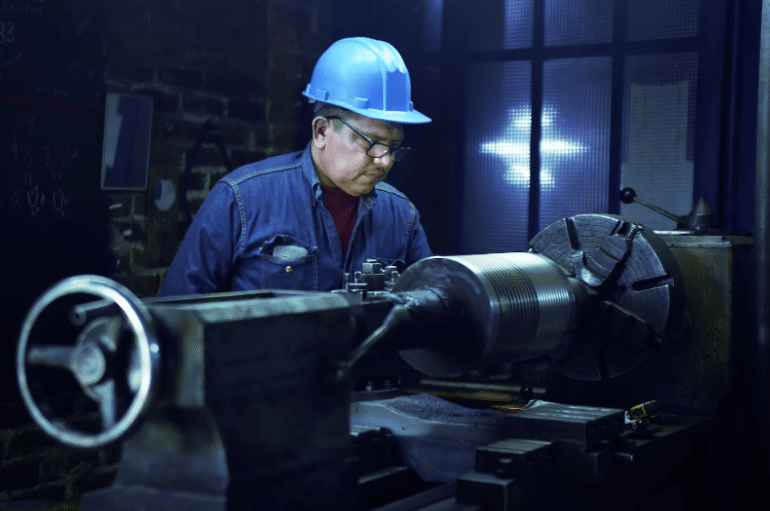What is Voice to Text?
Whether you’re driving and asking Siri to “Read my texts” or cooking and requesting Alexa to “Play some Red Hot Chilli Peppers,” voice to text tools are literally in the palm of your hands and virtually everywhere you look these days. And, when it comes to businesses, voice to text AI is solving some of an organization’s most pressing challenges, especially in concern to safety, collaboration, and productivity.
We’re going to answer all your pressing questions about voice to text technology.

What is Voice to Text?
Voice to text is a type of speech recognition program that transforms speech into written language. Since its inception, voice to text tools have rapidly grown to be used for a variety of purposes.
It requires no training, which makes it a desirable solution for anyone looking to achieve actions or digitally transcribe their words hands-free. From personal tasks to workplace responsibilities, voice to text is transforming how we live and work.
The Evolution of Voice to Text Technology
To truly understand how much voice to text technology has evolved, we have to take a look back at the past to where it all began.
Back in 1952, Bell Laboratories created the first speech recognition system called “Audrey.” Audrey was capable of understanding the sound of a spoken number, from zero to nine, with 90% accuracy.
Later in 1962, IBM introduced “Shoebox,” which was a machine that recognized 16 English words. Around this same time, the Soviets created their own version of voice to text technology that understood 200 words, but all of the words for both of these solutions were based on pre-recorded speech.
In the decades to come, the US Department of Defense funded a program at Carnegie Mellon University that created “Harpy,” which could understand complete sentences and 1,000 words. Speech recognition continued to grow and expand its capabilities to know more words and leverage statistical prediction models to identify words.
In 1990, Dragon Dictate entered the scene as the primary consumer-grade text to speech tool for desktops.
In our current age, we have access to voice to text solutions within mobile devices, such as Siri and Alexa. For organizations, the first-ever speech technology to understand business-specific jargon, in any accent, acoustic environment, or language has arrived. aiOla’s patented technology combines natural language understanding (NLU) and automatic speech recognition (ASR), empowering the solution to work for in any industry and vertical without having to adjust your existing processes. And, because of machine learning and artificial intelligence, today’s speech recognition tools continue to improve through use.
How it Works: The Process of Speech Recognition
Knowing the history of voice to text probably has you wondering even more so than ever how does speech to text work?
Without getting too technical, we can take a look at the key components of speech recognition and its basic process:
- Speech Input: A user speaks into a microphone, capturing audio of what they say.
- Speech Recognition: The speech recognition engine transforms the speech into text with the use of algorithms and machine learning models. Leveraging this technology, the voice to text solution will determine the most probable transcription of the speech.
- Text Output: The speech is put into written text which can be on a screen, a saved file, or leveraged to control other applications.
Voice to text technology can either be offline or online. For offline solutions, speech processing is performed locally on the device. In most instances, this is less responsive and accurate in comparison to online options. For online technology, the speech is sent to be processed on a remote server.
Typically, voice to text technology’s accuracy is impacted by its user’s accent, clarity, and/or background noise. However, with aiOla, users no longer have to worry about this as the combination of its proprietary technology empowers aiOla to understand all accents in any noise environment. Most notably, business-specific jargon that goes missed or misunderstood by your typical speech recognition tools renders itself completely usable by aiOla as it is intended to capture a business’ terminology to help fulfill mission-critical processes.
A Look at Advantages and Challenges
As you likely know from your own personal use of voice to text tools, there are plenty of upsides to be had, such as:
1. Increased Efficiency
Voice to text helps you get more done in less time. Since it’s faster to talk than type or write, you can multitask while fulfilling actions you’d have to manually execute otherwise. Additionally, with speech to text recognition, you no longer have to worry about illegible handwriting or losing paper-based documentation which can cause bottlenecks, especially for businesses.
2. Hands-Free Operation
With an AI voice to text generator, you can focus your attention on any task or machinery in your sight, rather than having to look down and type or write notes. Hands-free operation translates to safer work environments and protected employees.
3. Accessibility for Diverse Users
Speech recognition software offers an accessible solution for diverse users who may otherwise either struggle to hear or write. With nothing more than their voice and an enabled device, they can leverage text to voice technology.
Challenges and Hurdles
On the other end of the spectrum, nothing is perfect, right? When it comes to voice to text technology, there are some limitations that may be noticeable (but can be resolved), including:
1. Accuracy
Depending on the solution at hand, the tool’s accuracy may not be 100% or close to it. As mentioned, accuracy can be affected based on a user’s accent, language, background environment, and vocabulary. However, you can find a solution that has near perfect accuracy despite these variables (such as aiOla).
2. Privacy Concerns
When involving technology to listen to and understand the words from your mouth, it’s natural to be concerned about the privacy of personal data. From the perspective of technology capturing a human’s voice to also being able to hear personal information, security is a topic of question. That being said, companies that created the technology in the first place must adhere to compliance and regulations regarding data.
3. Technical Hurdles
Last but not least, for some users, there may be a technical hurdle to overcome when using a voice to text tool. Whether you need to learn how to operate a new device or understand where text files get saved, it can spur questions. Other solutions, such as aiOla, require zero learning curve as it’s compatible with your existing devices.

How Businesses Can Leverage Voice to Text
When it comes to voice to text in a business setting, it can be a complete game changer. You can use voice to text solutions to perform everyday tasks, hands-free, more safely, and with greater efficiency.
Without having to take their eyes off of what they are doing, workers can run through their day-to-day processes using voice to text tools to help them keep moving forward, mark off checklists, or notify other colleagues of actions that need to be taken. Whether you have employees running through food safety inspections, automotive safety tests, pharmaceutical checklists, logistics pallet processing, or anything else, there are many steps for completion that require utmost accuracy and distraction-free attention.
Let’s review what aiOla can provide to employees and business owners, as an example. aiOla’s voice to text technology can be used with any existing devices to help complete any type of process without disruption using nothing more than speech. This means that workers can get more done, in less time. Additionally, aiOla captures otherwise lost or unstructured data, thereby providing leaders and stakeholders with key insights. To exemplify, the captured data can assist in spotting trends or upcoming issues to enable immediate resolution or necessary process improvement or adjustments. By connecting teams across locations, businesses are able to work more efficiently and collaborate smarter. Say goodbye to paper-based and cumbersome workflows with the introduction of voice to text technology in your employees’ hands.
There’s a lot more to gain when using aiOla, but we won’t spell it all out here. It’s better to show you how it works because like voice to text outcomes, actions speak louder than words. Request a demo if you’re interested to learn more!
Closing Thoughts
As you can see, there isn’t just one answer to, “What is the purpose of voice to text?” Instead, voice to text solutions are able to accommodate your specific use case and deliver the benefits you desire without steep learning curves or any extra effort.
All you need is a voice to get started, and then, voice to text AI will do the rest!


